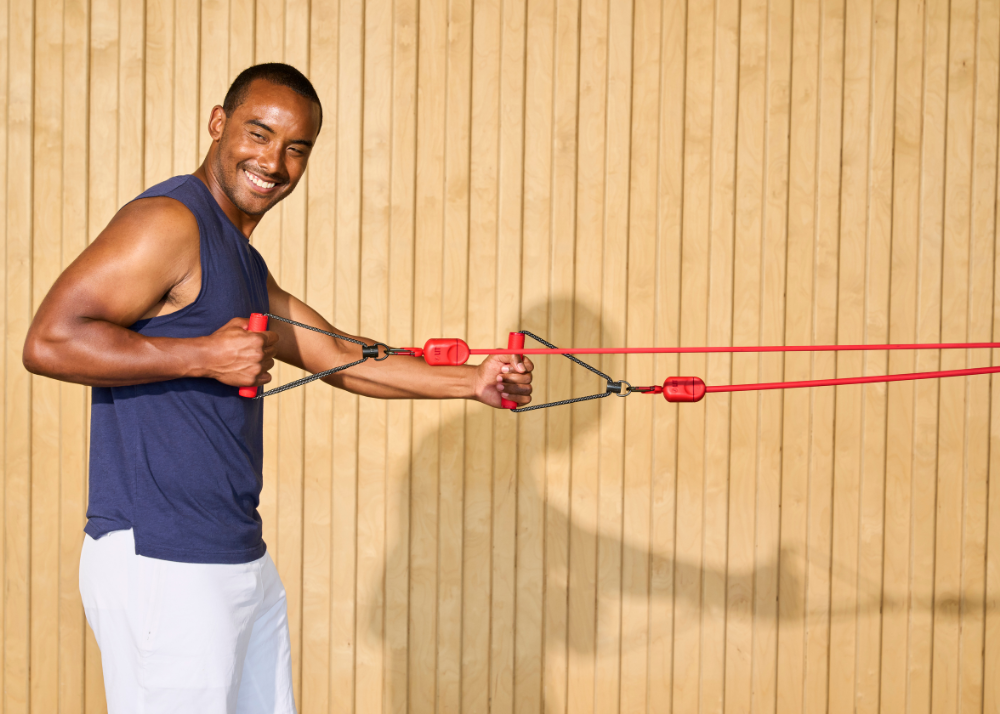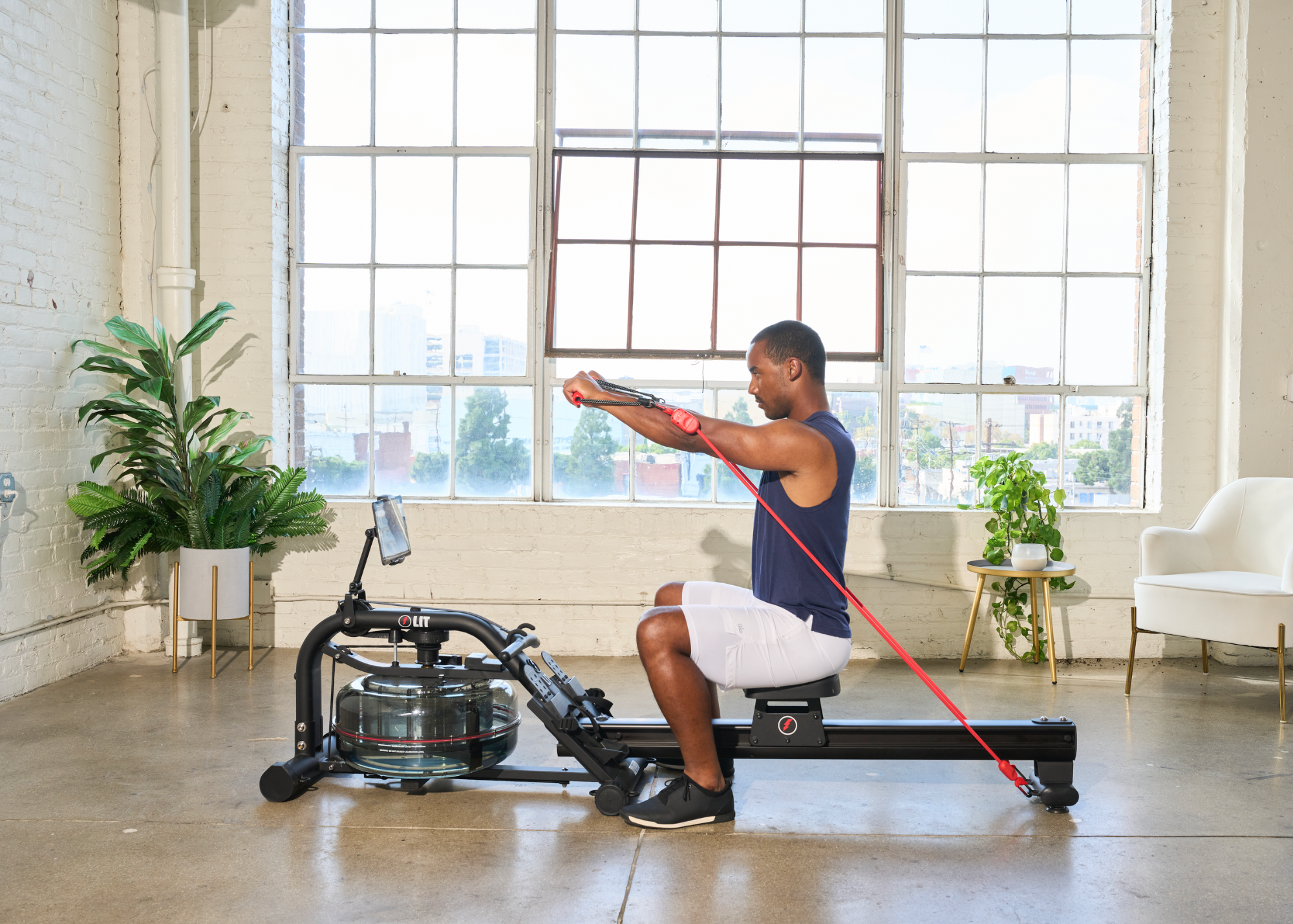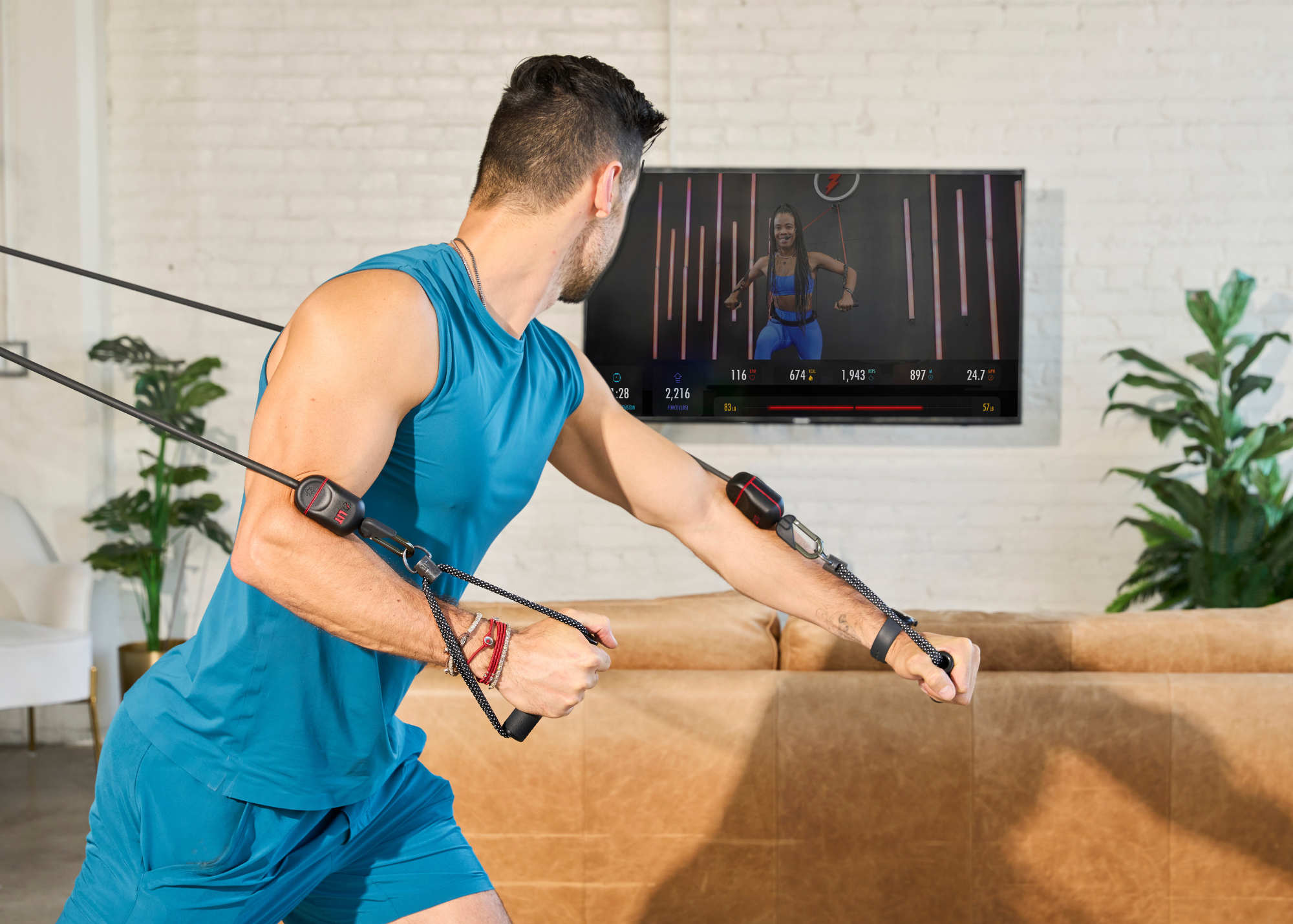Pilates and weight training are both different forms of strength training. The end goal might be the same, but these workouts take entirely different approaches to offer health benefits. Strength training is not just for strength; it provides benefits that include improved bone density, better mobility, improved body composition, and many more.
If both workouts are related to strength training, is Pilates better than weight training?
To truly understand the difference, the benefits, or the disadvantages of either, we need to understand their definition, and what particular benefits they offer. That's what we will be covering in this LIT blog.
What is weight training?

Weight training often involves using handheld weights like dumbbells or kettlebells and larger equipment like a barbell, weight sledge, or resistance machines like a bench press or squat rack. There are additional items that give you the benefits of weight training without the strain on your joints like resistance bands and bodyweight training.
4 Benefits of weight training
1. Build muscles and bone density
You can maintain your bone and muscle composition with a consistent weight training regime. The Journal of Bone and Mineral Research study shows that high-impact weight training for just 30 minutes a day, two times a week, can help improve bone density, structure, and strength in menopausal women.
2. Burns calories faster
Weight training is an excellent way to burn calories as it increases heart rate. According to the American Council of Exercise, when you do weight training, your body starts burning calories to return to a restful state. This is known as EPOC or excess post-exercise oxygen consumption, which is an important measure to calculate your workout output.
3. Helps maintain weight
With weight training, you can activate your metabolism to keep burning excess calories even after exercise. It's an efficient way to manage weight when you take a break from training.
4. Enhances the body mechanics
Training your muscles with additional weights makes them more adaptable to handling stress. It improves their mechanics in many ways. An Aging Clinical and Experimental Research studying the effects of resistance and strength training on elderly adults found that working out at least once every week results in a 37% increase in muscle strength, a 7.5% increase in muscle mass, and increased functional capacity by 58%.
What is Pilates?
Pilates is an exercise for strength and flexibility-building that uses controlled movements. It is the best form of exercise to increase mobility, improve posture, and enhance muscle strength. It is the best form of low-impact workout for increasing the range of motion of joints, building stronger muscles, and reducing the effects of Delayed Onset Muscle Soreness (DOMS).
4 Benefits of Pilates
1. Activating Core Workout
Pilates is arguably the best workout for strengthening the core. It can help you improve the strength of your core muscles and build endurance. A Proteus Journal study shows Pilates can improve core muscles, cardiorespiratory, and circumference measurements in post-delivered women.
2. Improves flexibility and strength
One of the significant benefits of Pilates is improved cervical flexibility, trunk movement, hip joints, and overall flexibility of the body.
3. It helps manage back pain
Back pain is a common age-induced problem that's easily manageable with low-impact exercises. It has been found that Pilates is a much better alternative to manage chronic pain as compared to other forms of exercise or no workouts.
4. Prevents Injuries
A Brazilian study on the effect of Pilates on musculoskeletal disorders concluded that "it can be effective both for the treatment of conditions such as scoliosis, back pain, ankylosing spondylitis, and breast cancer and for preventing injuries in adults, elderly people, and athletes."
Pilates vs. weightlifting: Which is better for me?
When both Pilates and weight training offer many benefits, how do you decide which one to include in your fitness plan?
Again, the answer is not straightforward. Pilates vs. weight training choice depends on your end goal, your current fitness level, and how intense you want your workouts to be.
We have covered some of the most common goals people have in mind.
What are your overall goals?
There is a distinguishable difference between a Pilates vs. a weight training body. One is a low-impact workout focused on strengthening the core and improving posture, while the other is focused on building muscle mass and bone density.
Simply put, if your goal is to maintain a lean, toned, yet strong, and active body shape, Pilates is ideal for you. But if you want to get bigger and bulkier, then weight training is the right choice. But to support both, you have to adjust your diet accordingly.
Pilates vs weight training for weight loss
The latter is the Pilates vs. weight training winner for weight loss evaluation. While both are excellent for weight loss, Pilates is a form of cardio that has limited weight loss gains. With weight training, you can burn calories faster and have better excess post-exercise oxygen consumption.
But you must remember that weight training and Pilates will be practical for weight loss unless you add diet to the regime.
Should you do Pilates or weight training if you suffer from an injury?
Injury rehabilitation programs use a mix of exercises. As Pilates is a low-impact exercise that takes the pressure away from joints and tendons, it is a milder yet effective way to activate and heal injured muscles. This is why, for injury rehabilitation, Pilates is better than weight training.
That being said, weight training also finds its applications in the segment. With weight training, doctors and physiotherapists can isolate specific muscle groups for rehabbing injuries.
Whether Pilates or weight training for rehabilitation is a decision that should be made based on the severity of the injuries and the benefits expected.
Muscle building- Which is better if you want to build muscles?
Weight training is an undisputed winner here. With Pilates, you typically build lean and strong muscles, but it is not an appropriate form of exercise for gaining bulky arms or legs. As weight training involves lifting heavy weights at low or high intensity, you can gain muscular and bulkier body form. It is why if your goal is muscle building, weight training will get you better results.
Should I do Pilates and weight training together?
Yes. That's how many trainers and coaches settle the Pilates vs. weight training dilemma. Both are excellent workouts, but when you combine them, there's a new frontier.
Pilates is great to introduce your body to work out when you are new or returning from an injury. Low-impact and bodyweight exercises make it easier to boost proprioception (your body's ability to tell where your body is in space). This gives you the confidence to take up weight training that helps you gain more muscles.
Pilates can aid your strength-building endeavors if you are a weight trainer by activating the often-neglected muscles, like the inner hip muscles. This will help you get results faster. Pilates complements weight training and it is often implemented together for strength and hypertrophy training.
Conclusion- Who should go for Pilates and who should prefer weight training?
Whether Pilates or weight training, you can't go wrong with either. But, if we have to categorize them, Pilates is suitable for anyone irrespective of age, fitness level, and gender. It is best for strengthening your core, improving balance and stability, and preventing injuries.
Weight training is for people who want bigger muscles or training to strengthen their joints and muscles.
With the LIT Strength Machine, you can supercharge the benefits of Pilates and weight training. We designed it to be the ultimate reformer and strength trainer which you can use at home.
~[[lit-strength-machine]]
Adjustable water resistance and bands replace the traditional weight systems in this machine. This novel design makes it the best home gym machine for increasing long-term strength, power, and stability.




